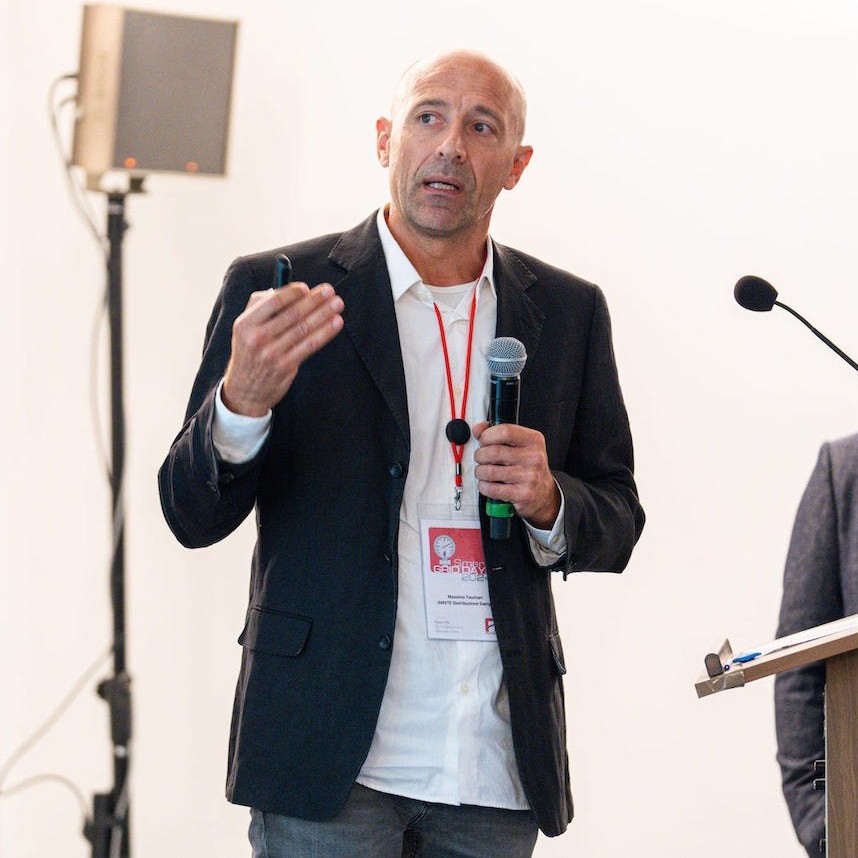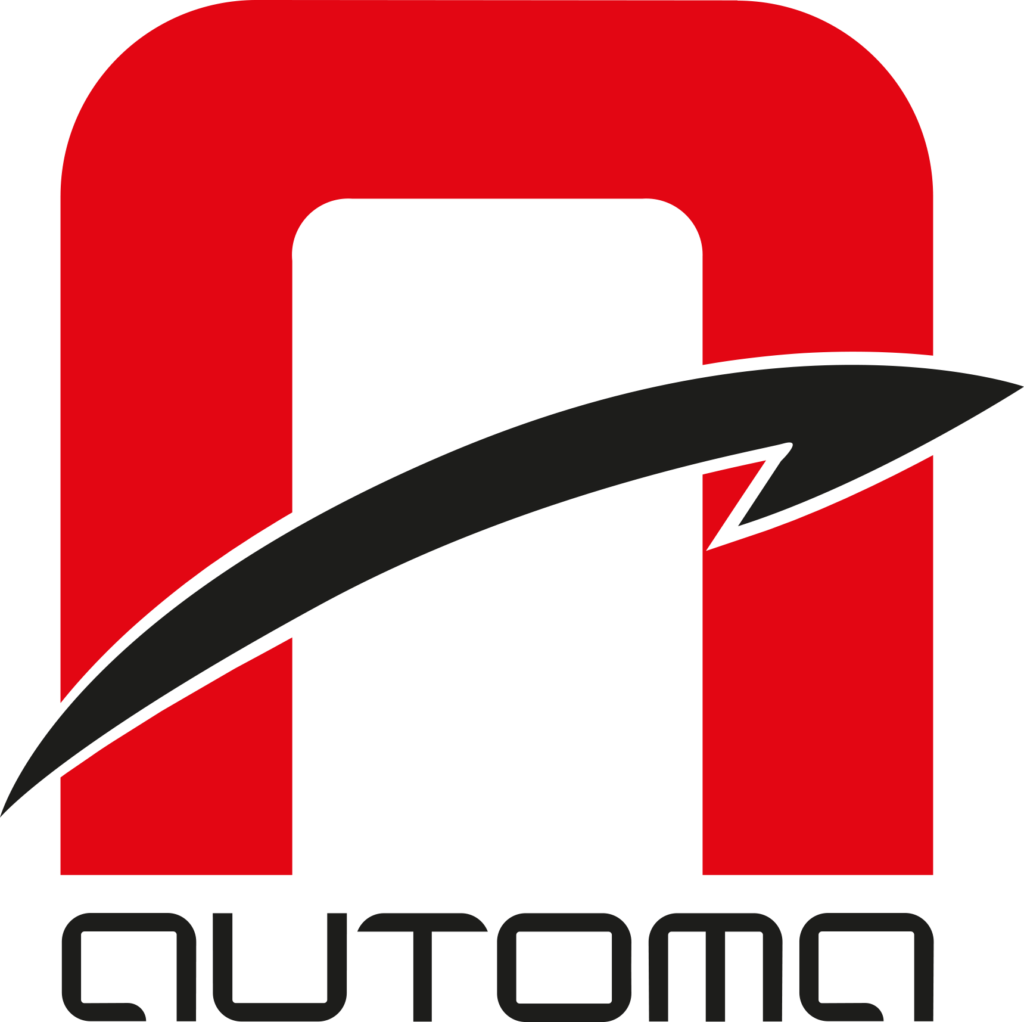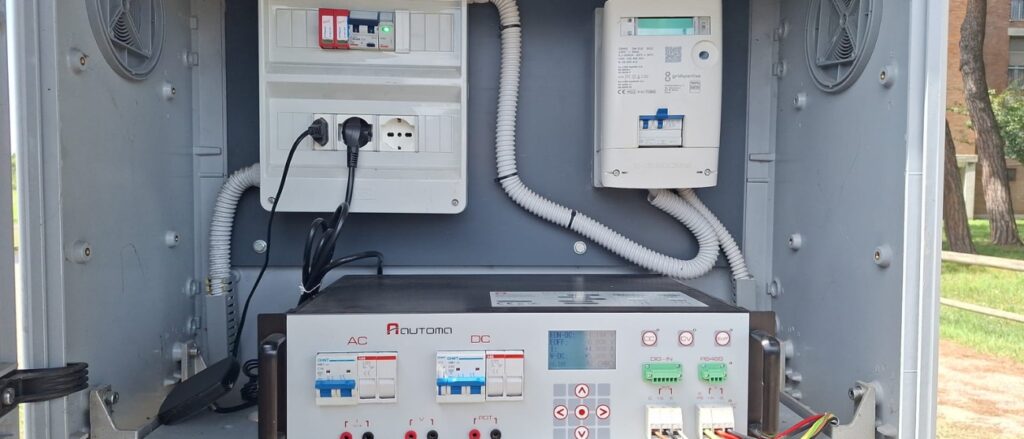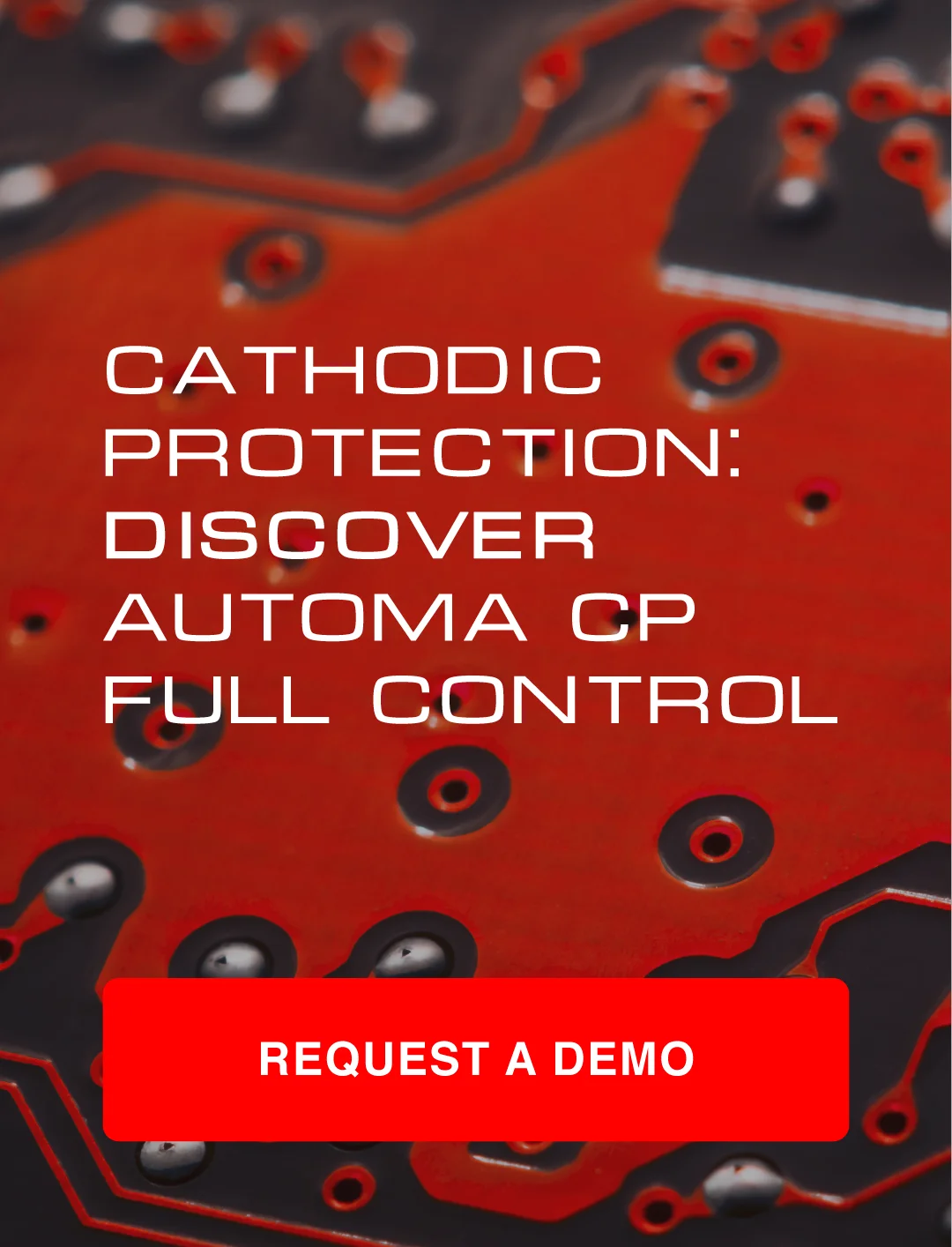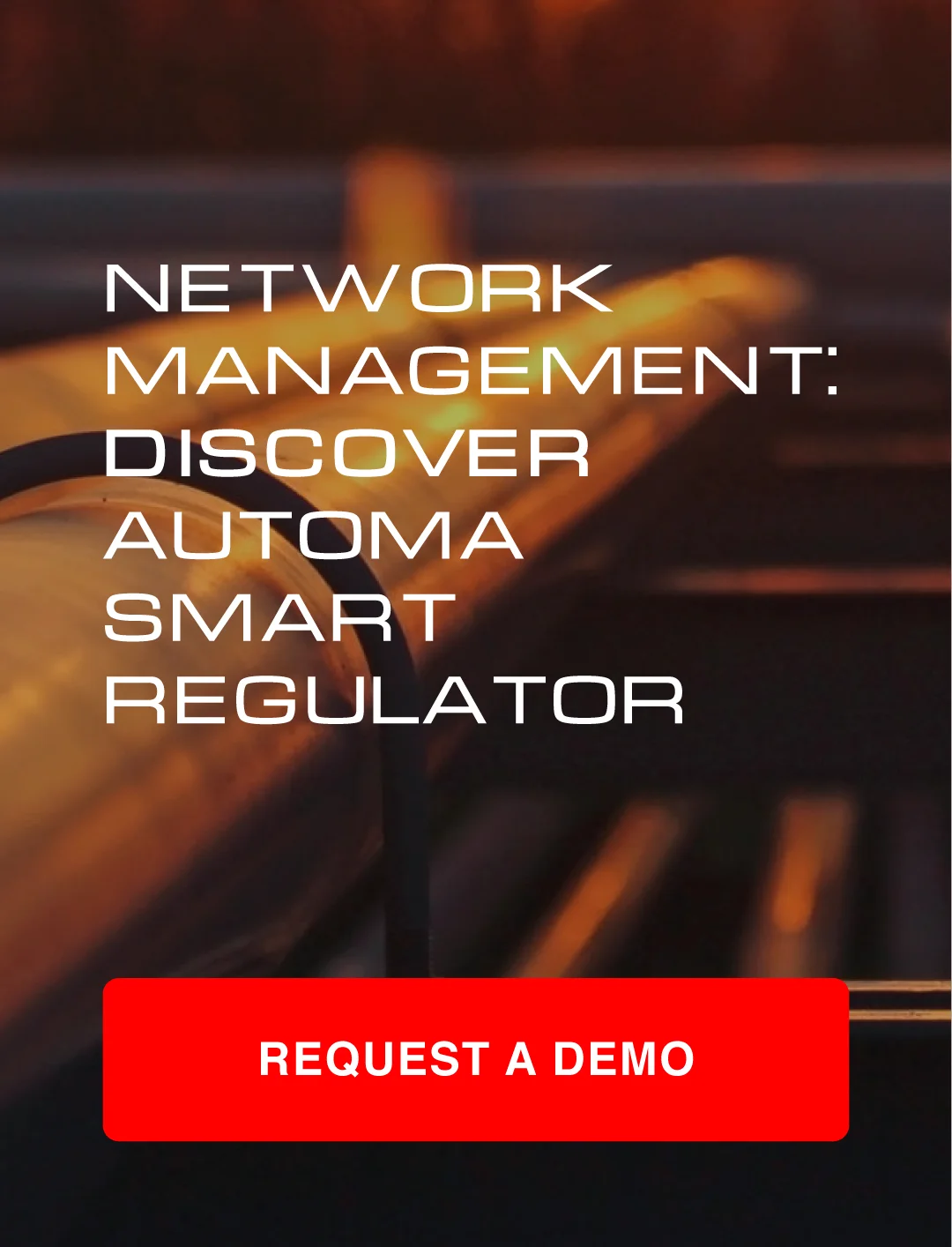From the intervention “Cathodic protection. Commissioning of an impressed current system in the presence of non-stationary interference”
SMART GRID DAYS 2024, 18 – 19 September 2024.
The INRETE distribution group, part of the Hera Group, is involved in the distribution of gas and electricity in Emilia-Romagna and Tuscany.
The case study we present concerns the commissioning of a cathodic protection system with impressed current for a distribution structure in the presence of non-stationary interference. Due to the morphology of the structures, this type of setup is extremely dynamic. We will see how the use of AUTOMA technologies, applied to regulation (with a G-POWER installed as the rectifier closest to the interference) and measurement techniques (a G4C-PRO device installed on the second power supply and a G4C-PRO with SOLAR BOX installed at the remote measurement point) can contribute to the efficiency of our plants, regulating them in a more effective way.
The starting situation
The system we are examining is a portion of a distribution plant in an urban neighbourhood where there is an interference caused by the nearby electrical substation of a direct current traction system.
The network, laid in predominantly sandy soil, is protected by two impressed current systems and served by a unidirectional drainage system. The architecture of the grid (qui credo ci vada grid) is mainly meshed, with an extension of about 24 km, and a surface area of slightly over 10,000 m².
Everything begins with the decommissioning of the unidirectional drainage system.
The new setup started in 2019 with: determination of the electrical state; assessment of the variability of the electric field; regulation and thus balancing of the electrical system. The new morphology places the two rectifiers (the two diamonds you see in the image – next page) in positions that are very off-center with respect to the detected interference.
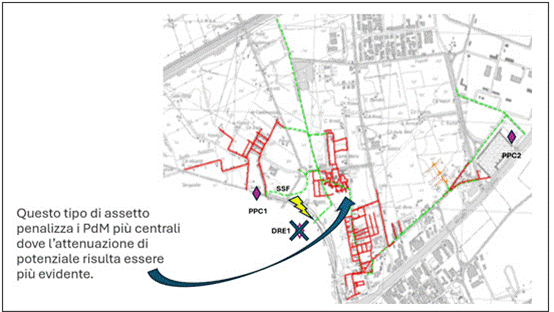
This means that the urban area closest to the interference registers very evident potential attenuations. We therefore decide to design an impressed current system, determining the variability of the electric field and analysing the most anodic areas, therefore the most suitable for this implementation.
The impressed current system
In October 2022 we realised the new impressed current system. Consequently, we also moved on to the implementation across the entire network of new measurement points with polarisation probes. In November 2022, we realised the new electrical setup which, indeed, places the newly designed rectifiers closer to interference.
Following the new commissioning and the variation of monitored electrical parameters – in compliance with UNI11094 – we reclassified all measurement points. We consequently decided to redo a new commissioning of the entire system, adhering to UNI EN ISO15589-1, starting from a preliminary investigation:
- Verification of the integrity of the disconnection.
- Verification of all wiring.
- Variability of the electric field.
- Start-up of the system with a checklist of all installations and related safety devices.
- Start-up of the installations with electrical state settings.
- Verification of electrical continuity.
- Rebalancing both the installations and the resistors on our network.
- Measurements of currents on the joints.
Consequently, we proceeded to the complete mapping of the entire system.
Me moved on with the reclassification of measurement points, cartography update, and – a frequently forgotten step – the collection of all these data in a commissioning report, where we recorded the reference values of the electrical state of our system, in accordance with the ISO standard, for comparison with future measurements.
Our remote monitoring system provides us with the opportunity to report for each individual measurement point its set point following calibration, directing it towards the balancing of the system. As can be seen in the image, this means that, in case of exceeding the set point, the monitoring system creates an anomaly line, from which an intervention order can be generated.

A current impressed system is particularly dynamic and the initial interventions, in addition to the aforementioned decommissioning of the drainage system, have provided the opportunity to improve the system, reducing the current density from 2.7 mA/m² obtained with the first setup in 2017 to about 1.0 mA/m² in 2023.
The AUTOMA solution to the interference problem
All these activities have certainly mitigated the issues present in the system, but without resolving the interferences that interact with the rectifier control system.
Fortunately, technologies are on our side and the adoption of the technique of measuring the Eoff potential (Instant-off) on the most interfered rectifier will prove to be a wise choice.
The new rectifier, the G-POWER by AUTOMA, has given us the ability to control the system directly based on the Eoff Value, which is the value corrected for the IR component, allowing its PID controller to be less sensitive to potential fluctuations.

This is particularly noticeable in the standard deviation of the current output from the rectifier. In this first setup, where both rectifiers operated at variable current, it is possible to see how variable the standard deviation was throughout the day.
In the subsequent testing phase, we linked the control of the rectifier closest to the interference to a remote E-probe even closer to the interference itself, while the other impressed current system was set to constant current (the visible spikes in the image are due to maintenance activities).
In the final setup, where the interfered rectifier was set to a local Eoff potential, a flattening of the root mean square deviation can be observed. With this configuration we have effectively halved the standard deviation of the current, a factor that, although less evident but equally interesting, is also noticeable in the root mean square deviation of the DDP E-probe detected at the most characteristic point of our system. Even in this case, there is an almost halving of the value in the phase of controlling the rectifier via local Eoff, which manages to operate at less electro-negative E-probe potentials.

AUTOMA designs and produces innovative hardware and software solutions made in Italy for monitoring and remote control in the Oil, Gas and Water sectors.
We were born in 1987 in Italy, and today over 50,000 Automa devices are installed in more than 40 countries around the world.
Do you want to know the advantages for the safety of your networks that you could have with the AUTOMA cathodic protection monitoring system?
Contact our team without obligation and we will tell you what we can do to optimize your infrastructure control.
